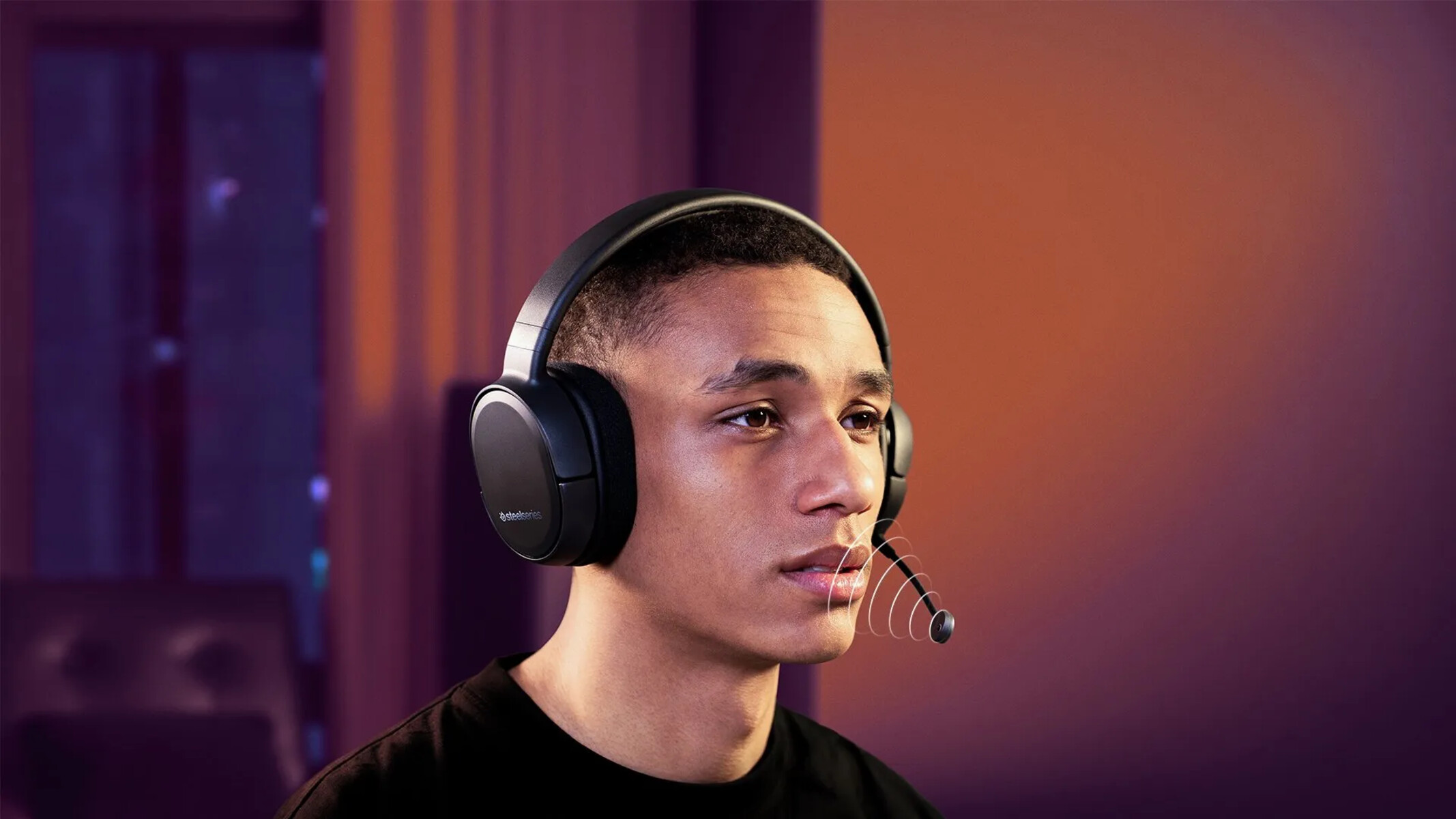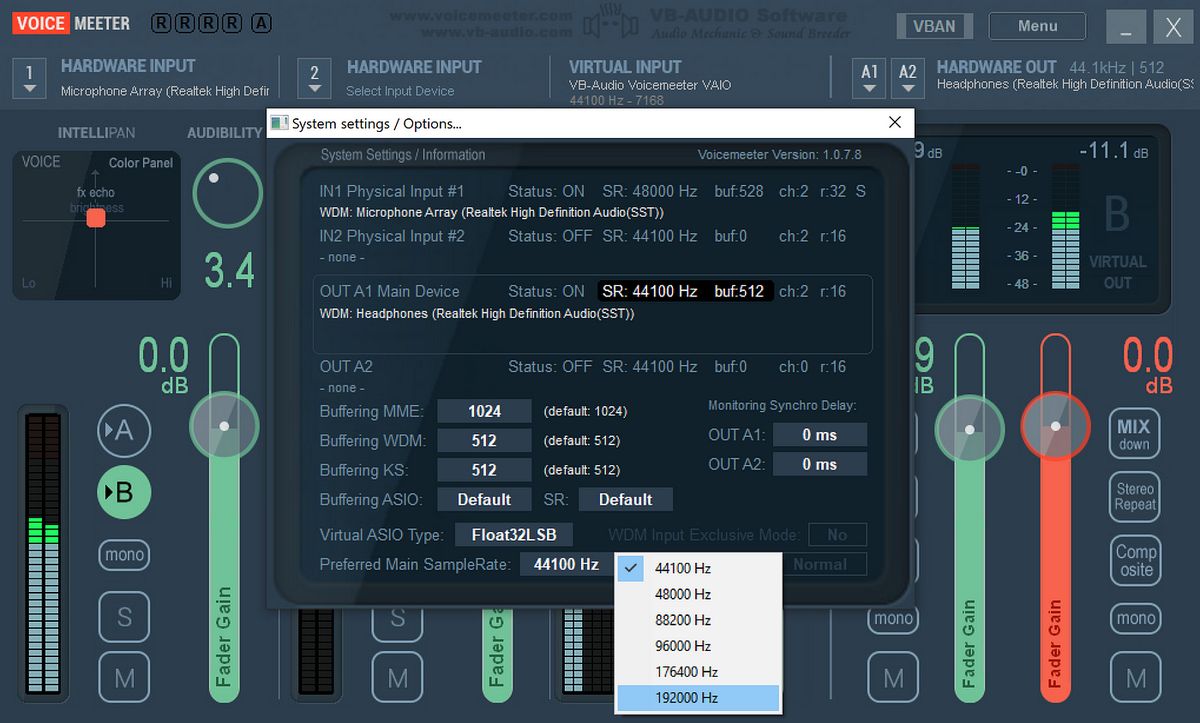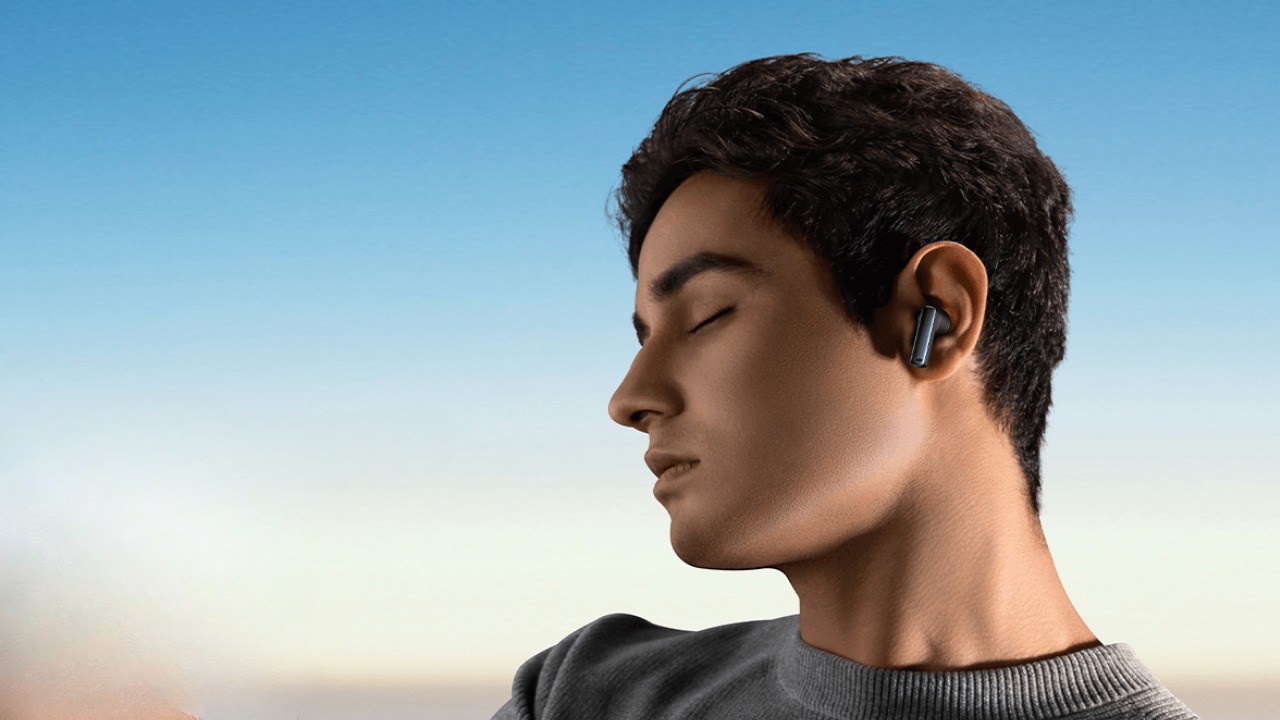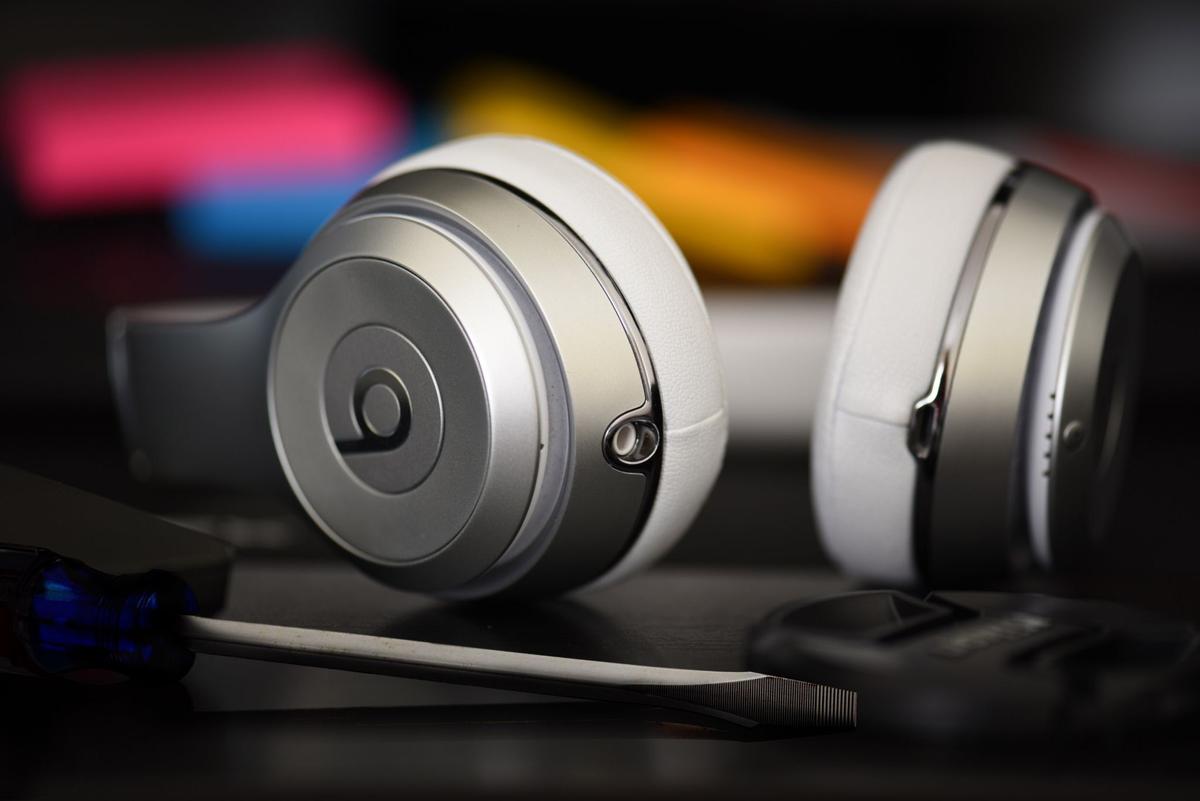Home>Production & Technology>Noise Cancellation>How Much Db Noise Cancellation Is Good


Noise Cancellation
How Much Db Noise Cancellation Is Good
Modified: January 22, 2024
Discover the optimal level of noise cancellation, find out how much dB noise cancellation is considered good, and enhance your audio experience.
(Many of the links in this article redirect to a specific reviewed product. Your purchase of these products through affiliate links helps to generate commission for AudioLover.com, at no extra cost. Learn more)
Table of Contents
- Introduction
- Understanding Noise Cancellation
- Importance of Noise Cancellation in Audio Devices
- Factors Influencing the Effectiveness of Noise Cancellation
- How Much dB Noise Cancellation Is Considered Good?
- Benefits of Higher dB Noise Cancellation
- Potential Drawbacks of Higher dB Noise Cancellation
- Finding the Right Balance for Noise Cancellation
- Conclusion
Introduction
Noise cancellation has become a crucial feature in the realm of audio devices, providing users with an immersive and uninterrupted listening experience. Whether you’re using headphones, earbuds, or even speakers, noise cancellation technology helps eliminate unwanted background noise, allowing you to appreciate the clarity and richness of your audio content.
Understanding the principles of noise cancellation and its impact on audio quality is essential when choosing the right device for your needs. Additionally, knowing how much decibel (dB) noise cancellation is considered good can help you make an informed decision. In this article, we will delve into the world of noise cancellation, its importance in audio devices, and the ideal dB range for optimal performance.
Before we dive deeper, it’s important to note that noise cancellation technology works by actively countering external noises using microphones and electronic circuitry. These devices detect ambient sounds and generate specific sound waves that cancel out the unwanted noise, resulting in a quieter listening environment.
The significance of noise cancellation cannot be overstated. Whether you’re working, studying, or simply enjoying your favorite music, the presence of background noise can be highly distracting. Noise cancellation technology offers a sanctuary where you can fully immerse yourself in your chosen audio without any interruptions.
Moreover, noise cancellation has practical applications beyond personal entertainment. Professionals working in noisy environments, such as open-plan offices or construction sites, can benefit greatly from noise-cancelling headphones to foster better focus and concentration.
While the concept of noise cancellation may seem straightforward, there are several factors that can affect its effectiveness. In the next section, we will delve into these factors and learn how they influence the performance of noise cancellation technology.
Understanding Noise Cancellation
Noise cancellation is a technology that aims to reduce or eliminate unwanted background noise, allowing the listener to focus on the desired audio. To understand how noise cancellation works, it’s essential to grasp the two primary types: passive and active noise cancellation.
Passive noise cancellation relies on physical barriers, such as the design of headphones or earbuds, to block out external noise. By creating a seal around the ears or in the ear canal, passive noise cancellation reduces the amount of noise that reaches the listener’s ears. While effective to some extent, this method is not as efficient as active noise cancellation in eliminating all unwanted sound.
Active noise cancellation, on the other hand, uses advanced technology to actively counteract ambient noise. It employs microphones to capture the external sound and generates sound waves that are precisely out of phase with the incoming noise. When the generated sound waves reach the listener’s ears, they cancel out the external noise, creating a quieter listening experience.
Active noise cancellation technology operates on principles of wave interference, specifically destructive interference. When two sound waves with equal amplitude and opposite phases meet, they neutralize each other, resulting in silence or reduced noise.
To accomplish this, noise-cancelling devices require a power source, usually provided by a battery. The microphones on the headphones or earbuds pick up the surrounding sounds, and the device’s circuitry analyzes this incoming audio. It then generates an appropriate sound wave that is out of phase with the external noise, effectively canceling it out.
Not all headphones or earbuds feature active noise cancellation technology, so it’s crucial to check the specifications before making a purchase. Devices with active noise cancellation provide a more immersive and noise-free listening experience, making them ideal for those who frequently encounter noisy environments or simply desire a higher level of audio quality.
Now that we have explored the basics of noise cancellation, let’s dive into the importance of noise cancellation in audio devices and how it enhances the overall listening experience.
Importance of Noise Cancellation in Audio Devices
Noise cancellation plays a crucial role in enhancing the overall audio experience by reducing unwanted background noise. Here are some key reasons why noise cancellation is important in audio devices:
- Improved Audio Clarity: By eliminating or significantly reducing background noise, noise cancellation allows you to focus on the intended audio content. Whether you’re listening to music, watching a movie, or participating in a conference call, the absence of background noise enhances the clarity of the sound, enabling you to catch every detail and nuance.
- Immersion in Audio: Noise cancellation technology creates a cocoon of silence, immersing you in the audio experience. It enables you to get lost in your favorite songs or concentrate on the dialogue of a movie without any external distractions. By blocking out ambient noise, noise cancellation enhances the overall enjoyment and immersion factor of your audio content.
- Improved Concentration and Focus: In environments with high levels of noise, such as busy offices or public transportation, it can be challenging to concentrate on tasks or enjoy your audio content. Noise cancellation provides a shield against these distractions, allowing you to maintain focus and productivity. This is particularly beneficial for professionals, students, and anyone who requires a quiet environment for work or study.
- Protecting Hearing Health: Continuous exposure to loud external noise can lead to hearing damage over time. Noise cancellation technology helps minimize the need to increase audio volume to compensate for background noise. By reducing the reliance on high volume levels, noise cancellation devices promote healthier listening habits and protect your hearing in the long run.
Overall, noise cancellation technology is a valuable feature in audio devices, offering numerous benefits for both casual users and professionals alike. It elevates the listening experience, providing crisp and clear sound reproduction while eliminating distractions. Whether you’re using headphones, earbuds, or speakers, noise cancellation can greatly enhance the quality and enjoyment of your audio content.
Next, let’s explore the factors that influence the effectiveness of noise cancellation technology, as these aspects can help you determine the ideal level of noise cancellation for your needs.
Factors Influencing the Effectiveness of Noise Cancellation
While noise cancellation technology is designed to reduce unwanted background noise, its effectiveness can vary depending on several factors. Understanding these factors can help you choose the right audio device with the optimal level of noise cancellation for your specific needs. Here are some key factors that influence the effectiveness of noise cancellation:
- Quality of Noise Cancellation Technology: Different audio devices employ varying levels of noise cancellation technology. Higher-quality devices often feature advanced algorithms, multiple microphones for better sound detection, and improved processing capabilities. These factors contribute to more efficient cancellation of external noise, resulting in a more immersive audio experience.
- Type of Noise: Not all noise cancellation technology is equally effective in canceling out different types of noise. Devices may excel at reducing continuous low-frequency sounds, such as the hum of an airplane engine, but struggle with sudden or irregular noises, like a car horn honking. Understanding the type of noise you encounter frequently can help you select a device that is optimized for canceling out that specific noise.
- Fit and Seal: For passive noise cancellation to work effectively, a proper fit and seal are essential. Over-ear headphones or in-ear earbuds should create a tight seal to block external sounds, preventing them from interfering with your audio experience. Ill-fitting or poorly sealed devices may compromise the effectiveness of the noise cancellation technology.
- Audio Volume and Content: The volume at which you listen to your audio can affect the perceived effectiveness of noise cancellation. Lower volume levels can make it easier to cancel out background noise, while higher volumes may require more robust noise cancellation technology. Additionally, certain audio content, such as music with dynamic range or movie soundtracks with action sequences, may pose challenges to noise cancellation, as sudden changes in sound may not be efficiently countered.
- Battery Life: Active noise cancellation technology requires power to function. The battery life of your audio device can impact the duration and effectiveness of noise cancellation. Devices with longer battery life can provide consistent noise cancellation for extended periods, while devices with shorter battery life may need frequent charging or may not offer noise cancellation when the battery is low.
Keep in mind that while understanding these factors is important, personal preference and specific use cases also play a role in determining the ideal level of noise cancellation. Some individuals may prefer a more immersive audio experience with minimal external noise, while others may desire a balanced approach that allows for some ambient sound awareness.
Now that we’ve explored these influencing factors, let’s delve into the question of how much dB noise cancellation is considered good for optimal performance.
How Much dB Noise Cancellation Is Considered Good?
The effectiveness of noise cancellation is typically measured in decibels (dB). The dB scale represents the level of sound pressure, with higher dB values indicating louder sounds. When it comes to noise cancellation, it’s important to understand that different levels of noise cancellation have varying effects on reducing background noise.
The ideal level of dB noise cancellation considered good depends on several factors, including personal preference, environment, and the intended use of the audio device. Generally, noise cancellation devices offer varying levels of dB reduction, typically ranging from 10dB to over 30dB.
For most users, a noise cancellation level of 20dB to 30dB is considered effective in reducing ambient noise to a comfortable level. This level of noise cancellation is capable of diminishing noise from common sources, such as traffic, airplanes, or office chatter. It allows for a more immersive listening experience by significantly minimizing distractions.
However, it’s worth noting that higher levels of noise cancellation, such as 30dB or more, can provide an even quieter environment. This level of noise cancellation is particularly valuable in extremely noisy settings, such as construction sites or crowded public areas, where the user may desire complete isolation from external sounds.
On the other hand, some individuals may prefer a more balanced or natural listening experience. In such cases, a lower level of noise cancellation, around 10dB to 20dB, may be more suitable. This allows for some ambient sound awareness, making it easier to hear important environmental cues or engage in conversations without needing to remove the headphones or earbuds.
It’s important to understand that noise cancellation is not an all-or-nothing feature. The degree of noise cancellation can be adjusted or customized in certain audio devices, allowing users to find the level that best suits their preferences and needs.
Ultimately, determining the ideal level of dB noise cancellation considered good depends on your personal preferences and the specific environment in which you plan to use the audio device. Understanding the options available, testing different levels, and considering input from user reviews can help guide your decision.
In the next section, we will explore the benefits of higher dB noise cancellation and discuss potential drawbacks to consider when choosing the right level of noise cancellation for your audio device.
Benefits of Higher dB Noise Cancellation
Opting for higher dB noise cancellation offers several benefits that can enhance your audio experience and provide a more immersive environment. Here are some advantages of choosing a device with higher dB noise cancellation:
- Greater Noise Reduction: With higher dB noise cancellation, you can expect a greater reduction in external sounds. This means that even in noisy environments, such as bustling city streets or busy offices, you can enjoy your audio content with minimal interruptions. The higher noise reduction allows you to fully immerse yourself in your music, podcasts, or movies without distractions.
- Improved Clarity and Detail: Higher levels of noise cancellation help bring out the finer details in audio content. By reducing background noise, the subtleties and nuances of the sound become more pronounced. You will be able to appreciate intricate instrumentals, vocal nuances, and audio effects with greater clarity, enhancing your overall listening experience.
- Increased Focus and Concentration: When working, studying, or engaging in tasks that demand concentration, higher dB noise cancellation can create a quieter and more focused environment. By eliminating external noise distractions, you can better retain information, improve productivity, and stay immersed in your work or studies.
- Enhanced Privacy: Higher dB noise cancellation provides better privacy by preventing others around you from overhearing your audio. This is particularly useful in public spaces, such as airplanes or cafes, where you may not want your audio content to be audible to nearby individuals. The increased noise cancellation ensures that your audio remains personal and confidential.
- Reduced Listening Fatigue: In noisy environments, your ears may become fatigued from constantly trying to discern audio content. Higher dB noise cancellation reduces the need to increase volume levels to compensate for external noise. This can help alleviate listening fatigue, allowing you to enjoy your audio content for longer periods without discomfort.
These benefits demonstrate why higher dB noise cancellation can greatly enhance your audio experience, providing a quieter and more immersive environment. However, it’s important to consider the potential drawbacks that may be associated with higher dB noise cancellation, as we will explore in the next section.
Potential Drawbacks of Higher dB Noise Cancellation
While higher dB noise cancellation offers numerous benefits, it’s important to consider potential drawbacks that may arise when using devices with extensive noise cancellation capabilities. Here are some potential drawbacks to keep in mind:
- Loss of Ambient Sound Awareness: With higher dB noise cancellation, there is a greater chance of losing awareness of important ambient sounds. This can be a concern in situations where you need to remain alert to your surroundings, such as when crossing busy streets or during outdoor activities. It’s crucial to strike a balance between noise cancellation and maintaining situational awareness.
- Dependency on Battery Life: Devices with higher dB noise cancellation often require more power to function effectively. As a result, the battery life of the device may be shorter compared to devices with lower noise cancellation levels. If you rely heavily on noise cancellation, you may need to manage your device’s battery life more judiciously or be prepared to recharge the device more frequently.
- Potential Audio Quality Trade-offs: While noise cancellation technology has advanced significantly, it’s possible that higher levels of noise cancellation may have a minor impact on audio quality. Some users may perceive a subtle difference in sound quality due to the processing required for noise cancellation. However, this trade-off is often minimal and not noticeable to ordinary listeners.
- Price Considerations: Devices with higher dB noise cancellation capabilities typically come with a higher price tag. If you’re on a budget or do not require extensive noise cancellation, investing in a more affordable device with moderate noise cancellation may be a more suitable option.
It’s important to assess your own needs and preferences when considering the level of noise cancellation that is right for you. Factors such as your listening environment, intended use of the device, and personal comfort with surrounding noise should all be taken into account.
Ultimately, the potential drawbacks associated with higher dB noise cancellation can be mitigated by finding the right balance and understanding your specific requirements. With careful consideration, you can enjoy the benefits of noise cancellation without compromising on essential factors.
In the next section, we will discuss how to find the right balance and determine the optimal level of noise cancellation for your audio device.
Finding the Right Balance for Noise Cancellation
When it comes to noise cancellation, finding the right balance is essential to ensure an optimal audio experience that suits your preferences and needs. Here are some steps you can take to achieve the right balance for noise cancellation:
- Consider Your Listening Environment: Evaluate where you’ll be using your audio device most frequently. If you’re in a noisy environment, such as a busy office or a crowded café, you may benefit from higher dB noise cancellation to block out the distractions. On the other hand, if you need to be aware of your surroundings, such as when commuting or engaging in outdoor activities, a lower dB noise cancellation level may be more appropriate.
- Take Into Account Personal Preferences: Everyone’s preferences regarding noise cancellation differ. Some individuals prefer complete isolation from external noise, while others may prefer a more balanced approach that allows for some ambient sound awareness. Reflect on your own preferences and choose a noise cancellation level that aligns with your comfort and desired audio experience.
- Read User Reviews and Test Devices: Before purchasing an audio device, it can be helpful to read user reviews and test the devices in person, if possible. User reviews can provide insights into the effectiveness of noise cancellation, and trying out different devices allows you to experience the varying levels of noise cancellation firsthand. This will help you understand what level works best for you.
- Consider Battery Life: Higher dB noise cancellation often requires more power, which may result in shorter battery life. If you frequently use noise cancellation or rely on your device for extended periods, consider devices with longer battery life or portable charging options to ensure uninterrupted noise cancellation when you need it most.
- Consult with Experts: If you’re unsure about the level of noise cancellation that would suit your specific needs, consider consulting with experts or professionals in the field. They can provide guidance based on your requirements and help you make an informed decision.
By considering these factors and finding the right balance for noise cancellation, you can tailor your audio experience to your liking. Remember that noise cancellation technology can be adjusted in certain devices, allowing you to find the perfect level of noise reduction that suits your preferences.
Finally, let’s conclude our discussion on noise cancellation and its importance in audio devices.
Conclusion
Noise cancellation technology has revolutionized the way we experience audio, offering a means to block out unwanted background noise and create a more immersive listening environment. By actively countering external sounds, noise cancellation allows us to appreciate the clarity and richness of our audio content.
Understanding the principles of noise cancellation and the ideal level of dB noise cancellation is crucial in selecting the right audio device for your needs. Higher dB noise cancellation provides greater reduction in background noise, resulting in improved audio clarity, enhanced concentration, and increased privacy.
However, it’s important to consider the potential drawbacks of higher dB noise cancellation, such as reduced awareness of ambient sounds and potential trade-offs in audio quality. Striking the right balance is essential, taking into account personal preferences, listening environments, and factors like battery life and price.
Ultimately, finding the optimal level of noise cancellation involves assessing your needs, reading user reviews, and testing different devices. By doing so, you can customize your audio experience and enjoy the benefits of noise cancellation without compromising on essential factors.
Whether you’re a music lover seeking uninterrupted listening, a professional looking to enhance focus and productivity, or someone who simply wants to escape from the noise of everyday life, noise cancellation technology can enhance your audio experience and provide a sanctuary of sound.
So, the next time you’re in the market for audio devices, consider the importance of noise cancellation, evaluate the factors that influence its effectiveness, and find the right balance that suits your preferences. With the right audio device and optimal noise cancellation, you can immerse yourself in the world of sound like never before.











